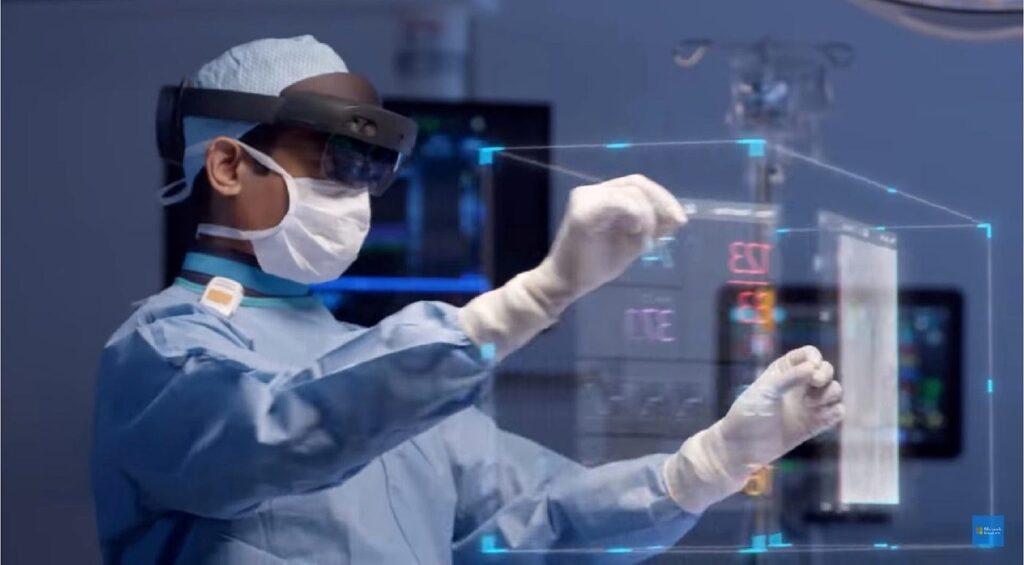
Health Information Technology (HIT) has revolutionized medical research by providing advanced tools and platforms for data collection, analysis, and sharing. As medical research becomes increasingly data-driven, integrating HIT systems plays a crucial role in accelerating discoveries, improving patient outcomes, and ensuring the ethical conduct of research. This comprehensive blog explores the multifaceted role of HIT in medical research, highlighting its impact on data management, clinical trials, patient engagement, and more.
Introduction to Health Information Technology
Health Information Technology encompasses various digital tools and systems that store, retrieve, share, and analyze health information. Key components of HIT include Electronic Health Records (EHRs), Health Information Exchanges (HIEs), clinical decision support systems, and telehealth platforms. These technologies aim to enhance healthcare delivery, improve patient care, and support medical research by providing reliable and efficient means of managing health data.
The Evolution of Medical Research
Medical research has undergone significant transformations over the past few decades. Traditional research methods, often characterized by manual data collection and analysis, have given way to more sophisticated, technology-driven approaches. The rise of big data, precision medicine, and genomics has further underscored the importance of HIT in modern medical research. Today, researchers leverage HIT systems to handle vast amounts of data, perform complex analyses, and collaborate across institutions and borders.
The Role of HIT in Data Management
1) Electronic Health Records (EHRs)
EHRs are a cornerstone of HIT, providing a digital repository for patient health information. For medical researchers, EHRs offer a wealth of data that can be used to identify patterns, track disease progression, and evaluate treatment outcomes. By accessing de-identified patient data from EHRs, researchers can conduct retrospective studies and generate hypotheses for future research.
2) Data Integration and Interoperability
One of the significant challenges in medical research is integrating data from diverse sources. HIT systems facilitate interoperability, enabling the seamless exchange of data between different healthcare providers, research institutions, and public health agencies. This integration is crucial for creating comprehensive datasets that provide a holistic view of patient health and support large-scale studies.
3) Big Data and Analytics
The advent of big data analytics has transformed how researchers analyze health information. HIT systems with advanced analytics tools can process vast amounts of data to uncover trends, identify risk factors, and predict outcomes. Machine learning algorithms and artificial intelligence (AI) are increasingly used to analyze complex datasets, offering new insights and accelerating the research process.
Enhancing Clinical Trials with HIT
1) Patient Recruitment and Retention
Recruiting and retaining participants for clinical trials is a perennial challenge in medical research. HIT systems streamline recruitment by identifying eligible patients through EHRs and other health databases. Automated alerts and communication tools can enhance patient engagement, ensuring better retention rates and more robust study results.
2) Real-Time Data Collection
HIT enables real-time data collection during clinical trials, providing researchers with up-to-date patient outcomes and treatment efficacy information. Wearable devices and mobile health apps can monitor vital signs, track medication adherence, and collect patient-reported outcomes, offering a continuous stream of data that enhances the quality and accuracy of research.
3) Regulatory Compliance and Ethical Considerations
Clinical trials must adhere to stringent regulatory and ethical standards. HIT systems support compliance by maintaining detailed records of study protocols, informed consent forms, and adverse event reports. Automated workflows and audit trails help ensure that research is conducted ethically and transparently, protecting the rights and well-being of participants.
Patient Engagement and Personalized Medicine
· Patient Portals and Mobile Health Apps
Patient engagement is a critical component of successful medical research. HIT systems, such as patient portals and mobile health apps, empower patients to participate actively in their healthcare and research. These platforms enable patients to access their health information, communicate with researchers, and contribute data through surveys and wearable devices.
· Precision Medicine and Genomics
The rise of precision medicine and genomics has highlighted the need for personalized approaches to treatment and research. HIT systems facilitate the integration of genomic data with clinical information, allowing researchers to identify genetic markers associated with disease and tailor treatments to individual patients. This personalized approach enhances the effectiveness of interventions and paves the way for groundbreaking discoveries.
Collaborative Research and Data Sharing
· Health Information Exchanges (HIEs)
HIEs are vital in facilitating data sharing among healthcare providers and research institutions. By connecting disparate health information systems, HIEs enable the secure exchange of patient data, supporting collaborative research efforts. Researchers can access comprehensive datasets that include information from multiple sources, enhancing the scope and depth of their studies.
· Research Networks and Consortia
HIT systems support forming research networks and consortia, bringing together experts from various fields to tackle complex health challenges. Collaborative platforms enable researchers to share data, methodologies, and findings, fostering a culture of open science and accelerating the pace of discovery. Examples of such networks include the National Institutes of Health’s All of Us Research Program and the European Union’s Horizon 2020 initiative.
Challenges and Solutions in HIT-Driven Research
1) Data Privacy and Security
HIT in medical research raises important concerns about data privacy and security. Protecting sensitive health information from unauthorized access and breaches is paramount. HIT systems must comply with regulations such as the Health Insurance Portability and Accountability Act (HIPAA) and the General Data Protection Regulation (GDPR) to ensure the confidentiality and integrity of patient data.
2) Standardization and Interoperability
Achieving standardization and interoperability across different HIT systems remains a significant challenge. Variability in data formats, coding systems, and terminologies can hinder data integration and analysis. Establishing common standards, such as the Fast Healthcare Interoperability Resources (FHIR) framework, is essential for enabling seamless data exchange and collaboration.
3) Technological Infrastructure and Training
Implementing and maintaining HIT systems requires substantial investment in technological infrastructure and training. Healthcare organizations and research institutions must allocate resources to ensure their staff use these technologies proficiently. Continuous education and support are necessary to maximize the benefits of HIT and overcome potential barriers to adoption.
Case Studies: HIT in Action
1) The UK Biobank
The UK Biobank is a large-scale biomedical database and research resource that contains in-depth genetic and health information from half a million UK participants. HIT systems are integral to the UK Biobank’s operations, enabling vast data collection, storage, and analysis. Researchers worldwide use this resource to investigate the genetic and environmental factors contributing to disease, leading to numerous scientific breakthroughs.
2) The All of Us Research Program
The All of Us Research Program, launched by the National Institutes of Health (NIH), aims to gather health data from one million or more people living in the United States. The program leverages HIT systems to collect and manage diverse data types, including EHRs, genomic information, and wearable device data. This initiative supports personalized medicine research and seeks to address health disparities by including participants from diverse backgrounds.
3) The COVID-19 Pandemic Response
The COVID-19 pandemic highlighted the critical role of HIT in responding to public health emergencies. HIT systems facilitated the rapid collection and sharing of data on infection rates, treatment outcomes, and vaccine efficacy. Platforms such as the COVID-19 Clinical Research Coalition enabled researchers to collaborate globally, accelerating the development of diagnostics, treatments, and vaccines.
The Future of HIT in Medical Research
1) Integration of AI and Machine Learning
Integrating AI and machine learning into HIT systems will continue transforming medical research. These technologies can analyze complex datasets, identify patterns, and generate unprecedentedly accurate predictive models. AI-driven tools will enhance clinical decision-making, support personalized treatment plans, and uncover new insights into disease mechanisms.
2) Expansion of Telehealth and Remote Monitoring
Expanding telehealth and remote monitoring technologies will enhance data collection and patient engagement in medical research. Telehealth platforms enable researchers to conduct virtual visits, collect patient-reported outcomes, and monitor real-time health conditions. Remote monitoring devices, such as wearable sensors and smart home technologies, provide continuous data streams that enrich research studies.
3) Advances in Genomic Research
Advances in genomic research will continue to drive the development of precision medicine and personalized treatments. HIT systems will be crucial in integrating genomic data with clinical information, enabling researchers to identify genetic predispositions, develop targeted therapies, and improve patient outcomes. Using CRISPR technology and other gene-editing tools will further expand the possibilities of genomic research.
4) Ethical Considerations and Patient-Centered Approaches
As HIT becomes more integrated into medical research, ethical considerations and patient-centred approaches will remain paramount. Ensuring informed consent, protecting patient privacy, and addressing disparities in access to technology are essential for conducting ethical research. Engaging patients as active partners in research and incorporating their perspectives into study design will enhance the relevance and impact of research findings.
Health Information Technology has become an indispensable tool in medical research, transforming how data is collected, analyzed, and shared. From enhancing clinical trials and patient engagement to facilitating collaborative research and personalized medicine, HIT systems are pivotal in advancing medical knowledge and improving patient outcomes. As technology evolves, integrating AI, telehealth, and genomic research will further expand the possibilities of HIT-driven research. By addressing challenges related to data privacy, standardization, and infrastructure, the healthcare and research communities can harness the full potential of HIT to drive innovation and achieve breakthroughs in medical science.



